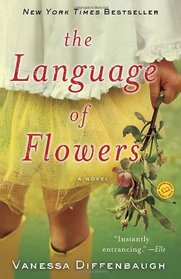Helpful Score: 8
Victoria has had such a tough childhood that she doesn't know how to deal with emotion. She makes wrong decisions, hurts those around her, and has trouble loving anyone - even herself. At times, I didn't even like Victoria very much! This dislike didn't stop me from reading; in fact, I couldn't stop reading. I was so curious how her story would turn out. The dual timeline seemed to just intrigue me more. Beautiful story.
Helpful Score: 7
For a first novel, this book is surprising in its rich layers and character studies. It's amazing and heartbreaking. Anyone who is a mother will be absolutely wrecked by parts of this story. While not a manipulative tear jerker (the author is very straightforward in her descriptions and characterizations), I found it difficult to remain dry-eyed while reading this. Ultimately, the message is that the hardest person to forgive is yourself, and it's difficult to love anyone else until you have accomplished that. Towards the end, the author starts trusting that the reader has paid attention to the meanings of flowers and starts using them in the story without giving the definitions. (If you want to "cheat", there's a dictionary in the back of the book.)
Helpful Score: 7
The author makes you feel the characters in this book - thier actions, their emotions and their issues. The subject of flowers and their meaning tends to be a lost art to several people but the author brings the art back to the surface. The book is a quick read and may entice you to learn more about the language of flowers.
Helpful Score: 7
This book was intriguing in the beginning. I couldn't wait to find out how the Victorian language of flowers played into the plot. I had a little trouble following the dual timeline, but the complexity of the main character pulled me in and kept me going. Then *bam* 3/4 of the way through it fell apart..... The kind of ending that makes you think, "Really? REALLY!?! Aw, c'mon". I thought it was unbelievable and felt "hurried." Too bad, because it had great potential.
Helpful Score: 6
The Language of Flowers tells the Victoria's story. Victoria is abandoned as an infant and passed from foster home to foster home until the age of ten. A possibility of adoption arises but does not work out. She then lives in a group home until she is "emancipated" at age 18. Essentially, she lives the first 18 years of her life feeling like she is unloved and unlovable. As such, she engages in a lot of self-destructive behavior to not allow herself to love or engage so that she cannot be rejected.
The book begins as Victoria is emancipated. It does weave back and forth to let the story of her childhood emerge. Flowers are central to this story as Victoria uses the language of flowers (each flower having a specific meaning) to express herself and to help others find happiness.
What makes this book work is the character of Victoria and the urge to reach out and protect her and to convince her that love is possible. Finding such emotion in a book makes it a great read.
The book begins as Victoria is emancipated. It does weave back and forth to let the story of her childhood emerge. Flowers are central to this story as Victoria uses the language of flowers (each flower having a specific meaning) to express herself and to help others find happiness.
What makes this book work is the character of Victoria and the urge to reach out and protect her and to convince her that love is possible. Finding such emotion in a book makes it a great read.





